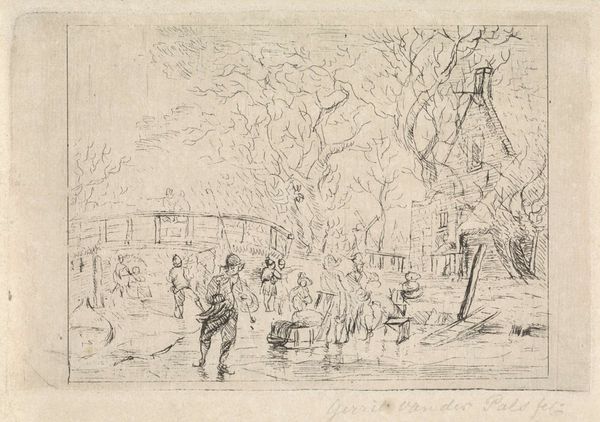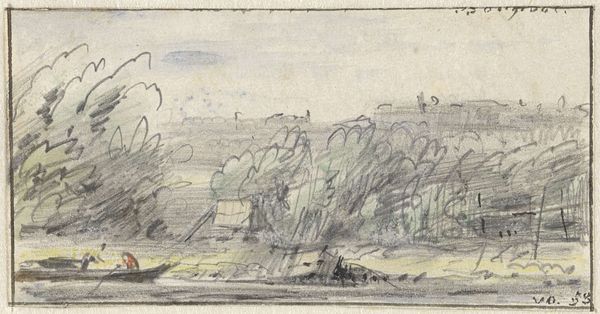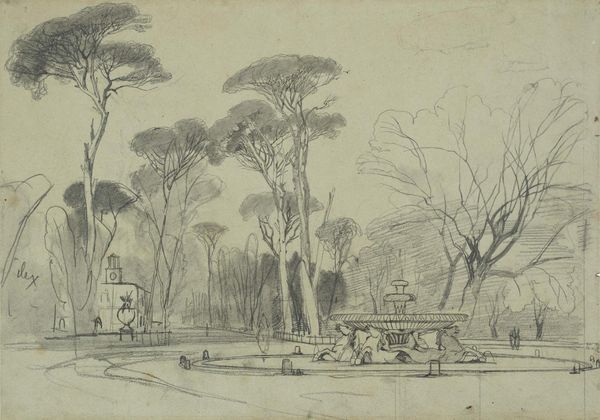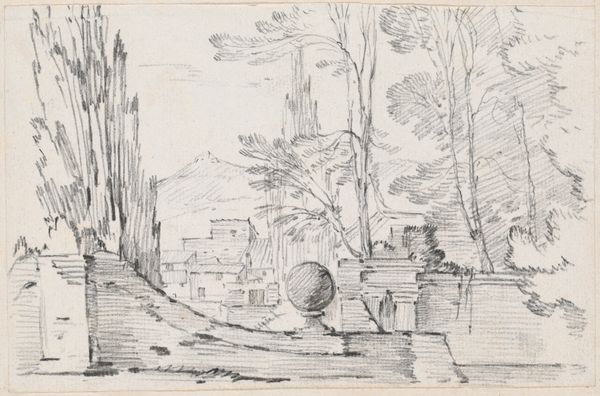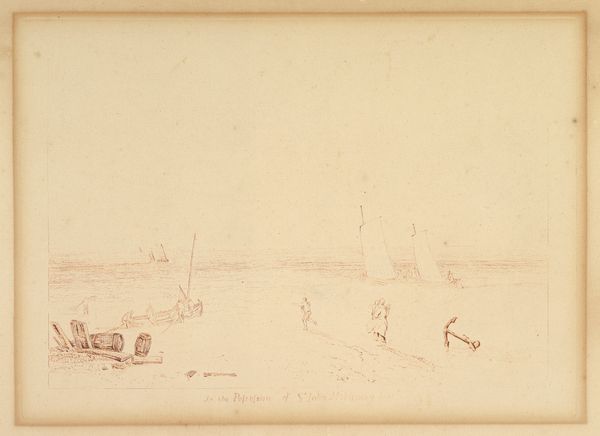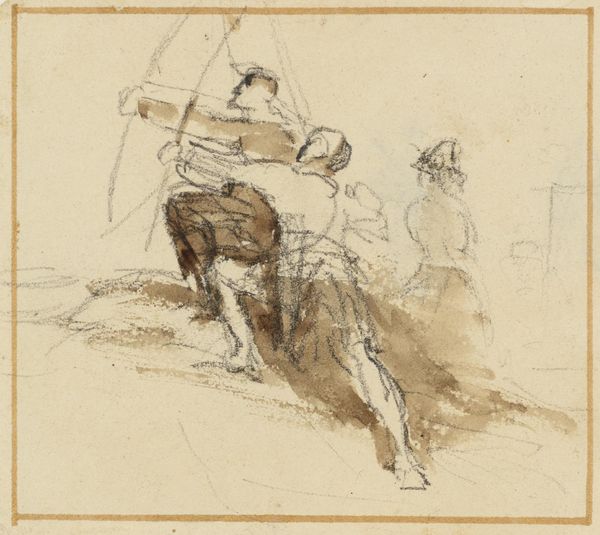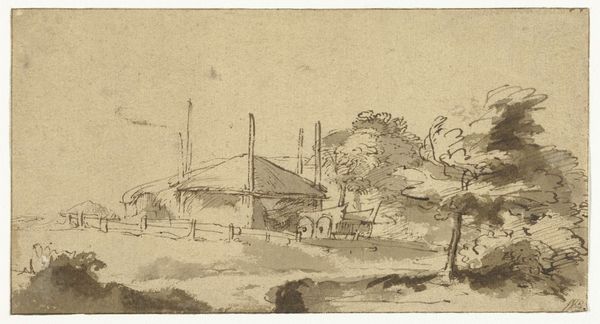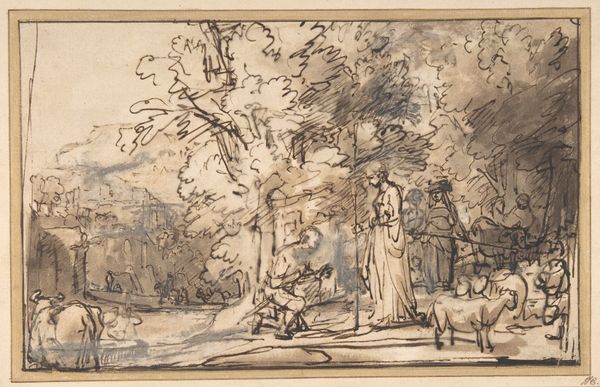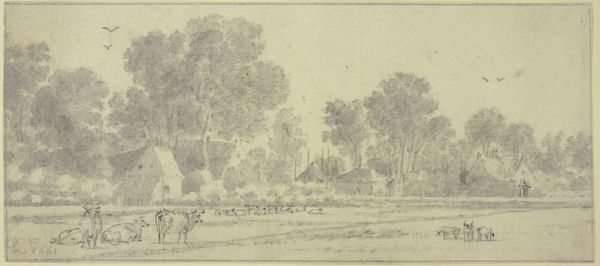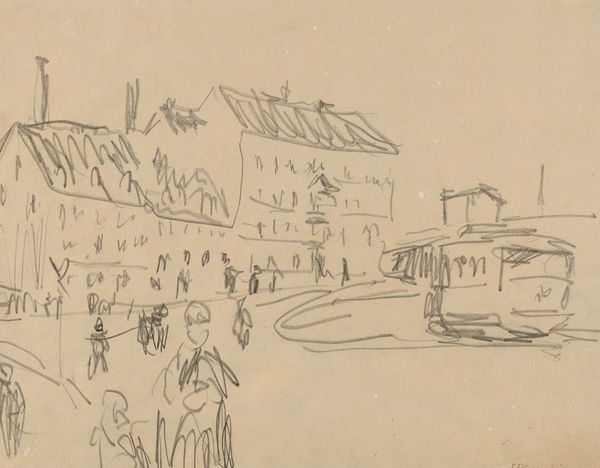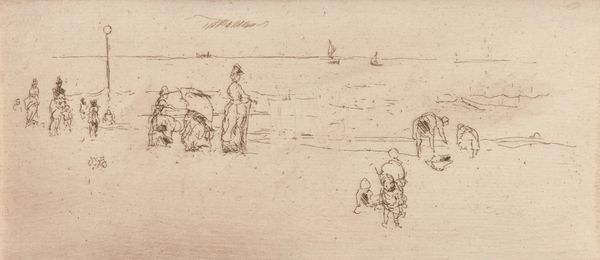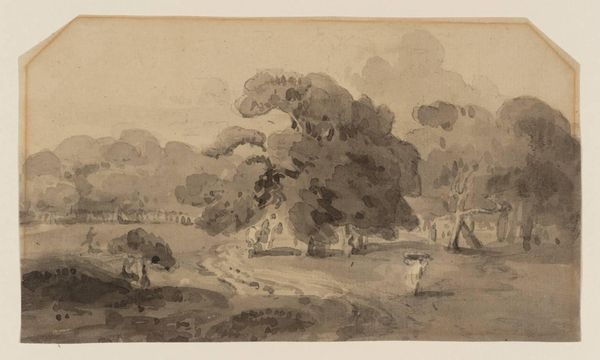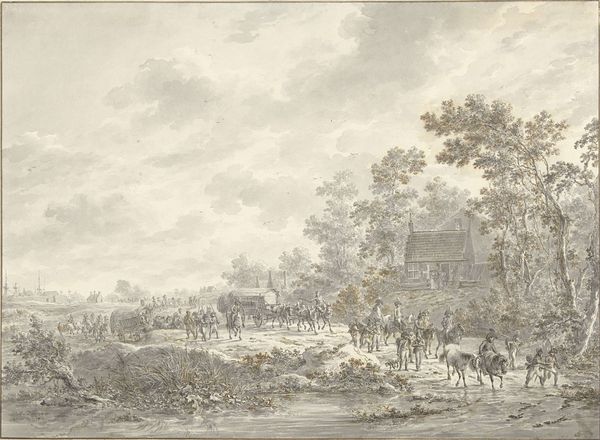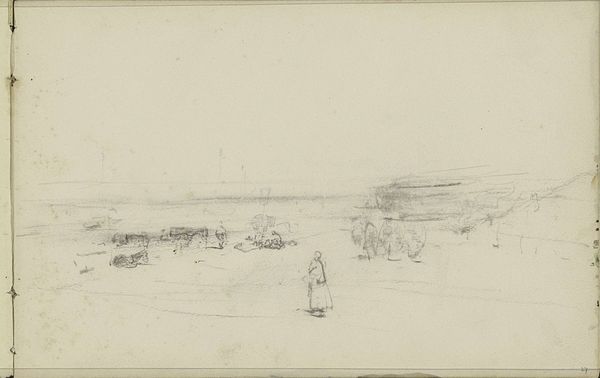
Copyright: Public Domain: Artvee
Editor: So, this is Winslow Homer's "Caravan with Covered Wagons Resting," a pencil and watercolor drawing from 1861. It feels like a brief, paused moment; a temporary settlement with these wagons and figures just sort of...sketched in. What stands out to you here? Curator: I’m drawn to the very *act* of depicting this caravan. Homer isn't just capturing a picturesque scene; he's documenting labor, transit, and the sheer material presence of these wagons, these shelters, these tools of movement across a landscape being materially altered, consumed by a nation on the move. Think about the material constraints, the cost of the paper, the pencils used. Even the apparent ‘roughness’ is a sign of production value isn’t it? Editor: That’s interesting… the "roughness" speaking to value. In what way? Curator: Well, Homer deliberately *chose* this looser, quicker method, prioritizing capturing a specific scene quickly over a detailed, labored work. The very speed suggests he saw immediacy in it, some importance. These material decisions aren’t simply stylistic – they reflect how this event was considered, consumed by the contemporary public. The materiality tells the story. What does that open up for *you*? Editor: I guess I hadn't really thought about how the choice of a sketch elevates a relatively mundane scene. It almost feels…documentary. Curator: Exactly! And the fact that it *is* a drawing. Consider it not as 'less than' a painting, but its own conscious statement! Even Romanticism must consume materials! Think, too, about how these figures rest, presumably weary after a difficult day, relying on these hand-crafted wagons and what that act meant socially and individually. Editor: I never would have thought to view it that way; I'll definitely consider materials and means more in future analysis!
Comments
No comments
Be the first to comment and join the conversation on the ultimate creative platform.
